22. Group Assignment Week 5 - 3D Scanning and Printing¶
This week we are working on 3D scanning and Printing individually as well as in group. The following are the group and individual assignments.
Group Assignment:
- Test the Design Rules for your 3D printer(s)
Group Members:
3D Printer¶
The 3D printer in our lab is Makerbot Sketch. We have used the makerbot website to learn about the basic working of the makerbot 3D printer and softwares used to 3D Print anything. The details of our reference is available at: https://www.makerbot.com/learn/ and have used the abstract from the site to explain about the printer. The Makerbot Sketch has the following characteristics:
Print Technology
Fused Deposition Modeling
Build Volume
150mm x 150mm x 150mm
[5.9in x 5.9in x 5.9in]
Layer Resolution
100-400 microns [0.0039 IN-0.0157 IN]
Print mode tuned for 200 microns
Material Diameter
1.75 mm [0.069 in]
Material Compatibility
MakerBot Sketch PLA Material and
MakerBot Sketch Tough Material
Extruder Compatibility
MakerBot Sketch Extruder
Nozzle Diameter
0.4 MM [0.015 IN]
Print File Type
.MAKERBOT
FDM (Fused Deposition Modeling)¶
MakerBot’s 3D Printers rely on a technology called Fused Deposition Modeling or FDM. It uses an extruder, which acts similar to a hot glue gun. Plastic filament is fed in through the top, is melted at 215 degree, and finally is “extruded” out of a small nozzle into the layers that build a 3D print.
Makerbot image Makerbot extruder -image Makerbot filament image
Cartesian Coordinates¶
MakerBot 3D Printers know where to move using a three dimensional cartesian coordinate system which defines every point of a 3D model with a unique position along the X, Y, and Z axes. The coordinates are fed to the printer from MakerBot Print and MakerBot Mobile.
Makerbot Filament¶
There are number of available Filaments in market for 3D Printing with most popular being the PLA and ABS filaments. However, for our purpose, MakerBot PLA Filament is the best and most consistent filament optimized for use in MakerBot 3D Printers. Safe for the classroom, office, or home, this filament is non-toxic and easy-to-print with minimal warping or curling. This is the Filament we used in our lab for the Makerbot Printer. The Filament has the following characteristics.
3D Printer test Print¶
Different 3D printers can print differently based on a couple of factors. This differences in printing translates to the quality of print based on application. In most of the cases, we are looking at whether the printer can print the smallest details and if the printer can print at different angles.
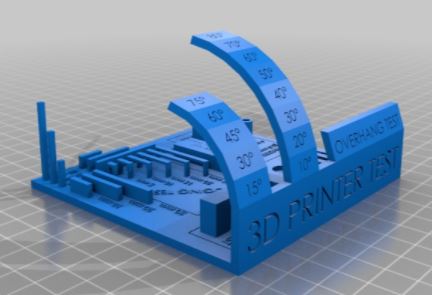
Therefore, using unique designs that contains different situations can differentiate the 3D printers for all the different parameters. A number of differences could also result from the combination of the printer filament and the temperature of the nozzle. For the current case we have PLA filament for a Makerbot 3D printer that has a range of nozzle temperature of 210 to 250°C , and a heated bed around 80 to 110°C.
Therefore we made use of a more dynamic test model available at:
https://www.thingiverse.com/thing:2656594 to test print and check the print quality of the 3D Printer. There are other extensive test prints available on all3dp.com


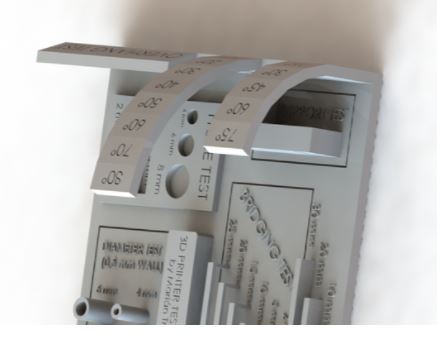
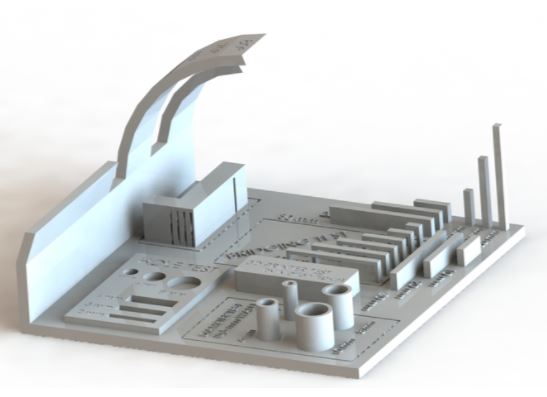

This test includes:
- Support test
- Scale test
- Overhang test
- Hole test
- Diameter test and
- Bridging test.
It is supposed to be printed with 100% Infill without supports.
3D Printer setup¶
First the .stl files are downloaded from the web. These files are to be converted to G-code. We make use of Makerbot print software tool to convert the .stl file to G-code for the 3D Printing machine to recognize the commands.
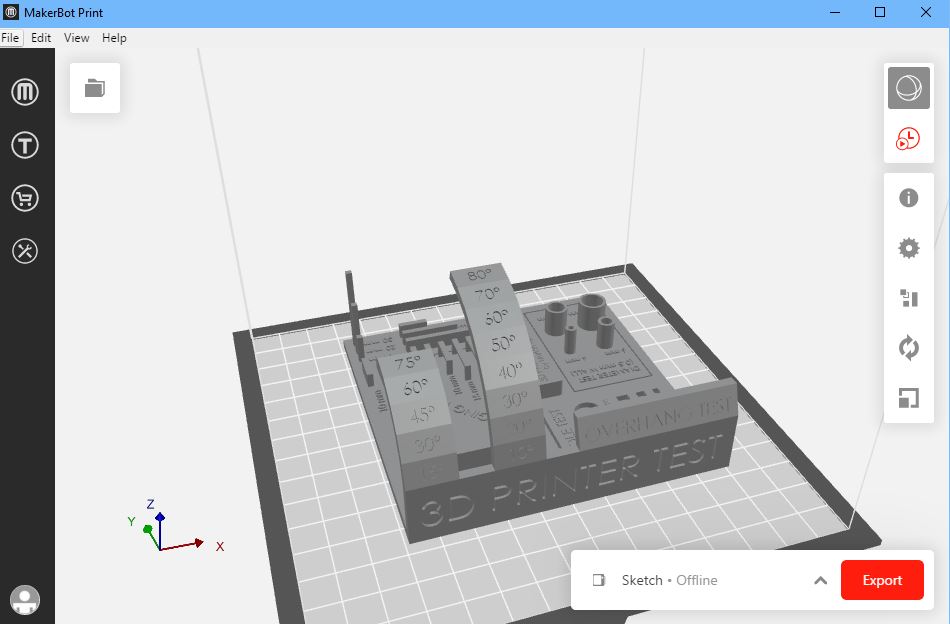
The tools we are using are:
- MakerBot SKETCH™ 3D Printer
- MakerBot PLA Spools
- Build Plates
- Spatula
- Snip
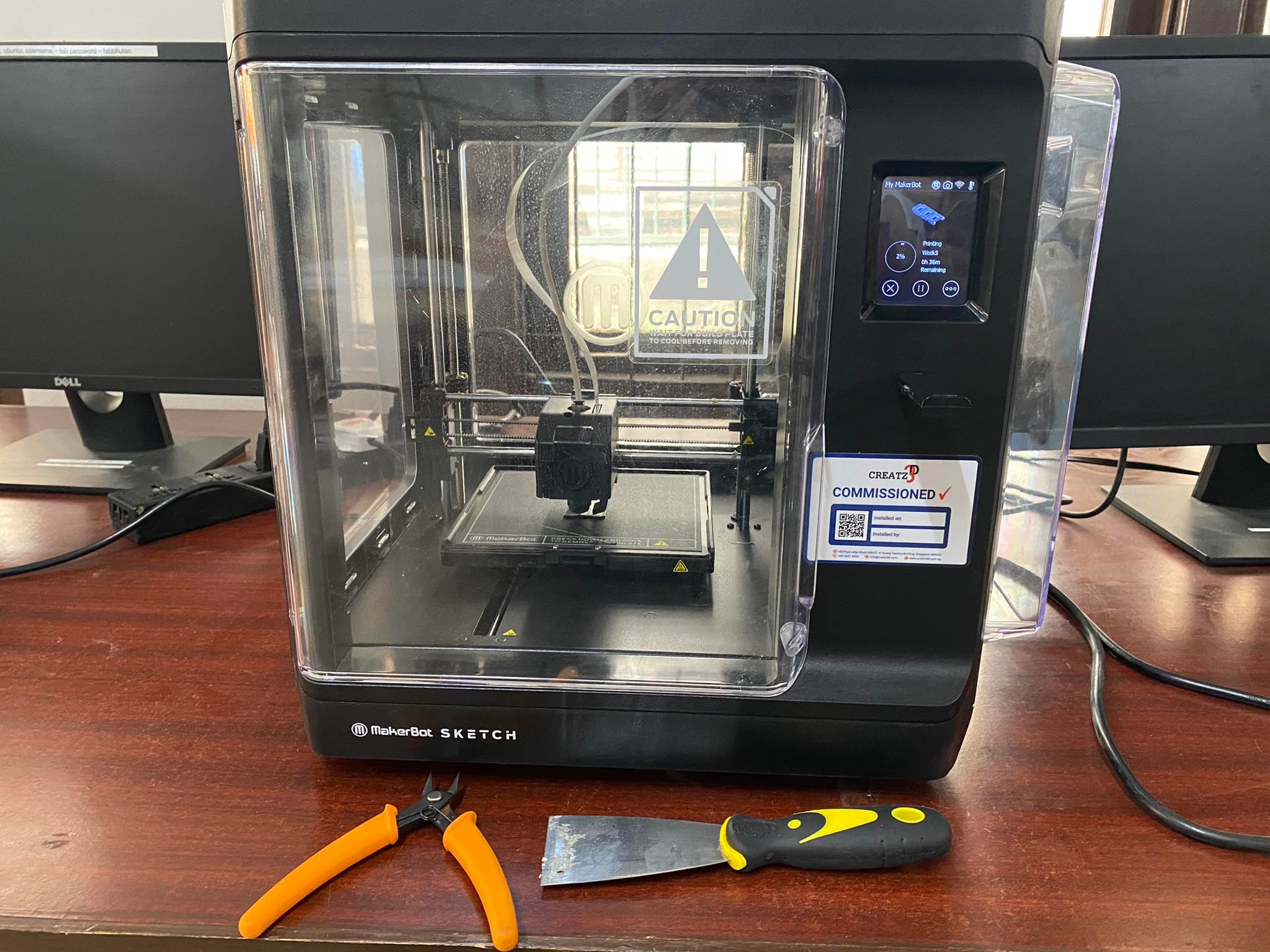
We make the required settings on the printing file from the makerbot print and the g-code is save in a USB drive and further transferred to the printer. On the Makebot print software once the .stl file is imported, I make use of offline mode to select the printer as Makerbot Sketch. Then for the given printer, i can change some settings namely the extruder and other settings. For the current print, I make use of PLA and keep all other settings same without supports.

The file generated is then given to the 3D printer with the following printer settings.
Base Temperature:50 degree C
Extruder Temperature:220 degree C
The temperature settings is shown in the video below:
The final print of the model is shown below.
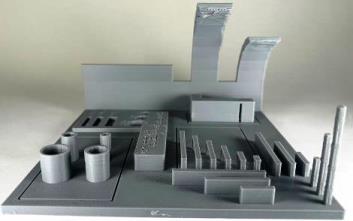

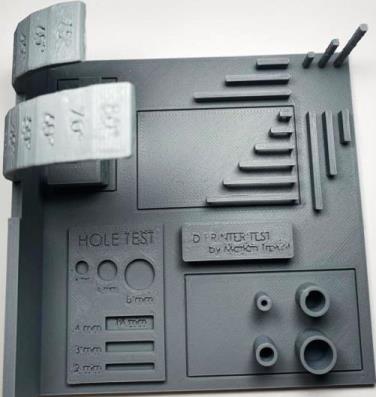

The overhang of the model was printed well on the outer side. The texts that are larger in size were also printed as expected.
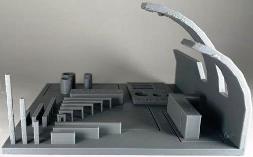

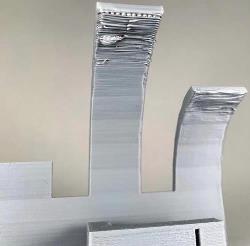
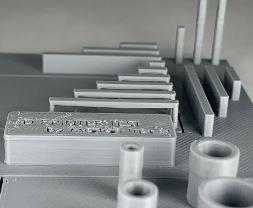
However, the overhangs at the edges were not printed as expected. There was rough edges coming out while the smaller texts were also not particularly clear. This shows that the smaller sized text was not printing as expected.
Files¶
Downloaded STL file : Downloaded STL file
G-Code of Downloaded STL file : G-Code of Downloaded STL file